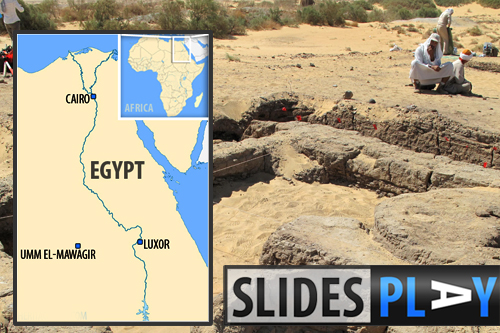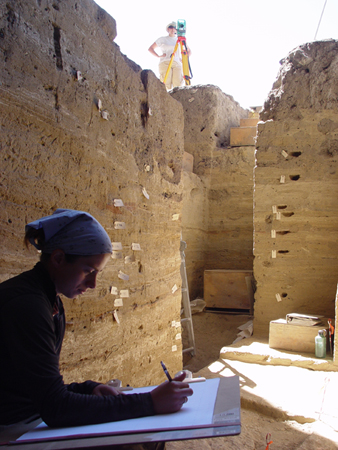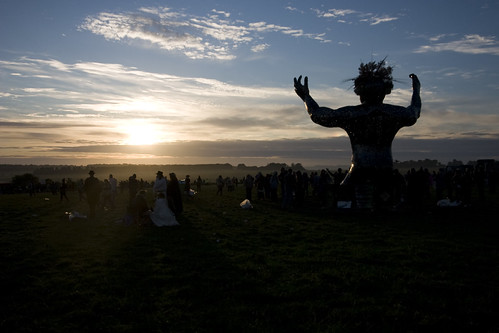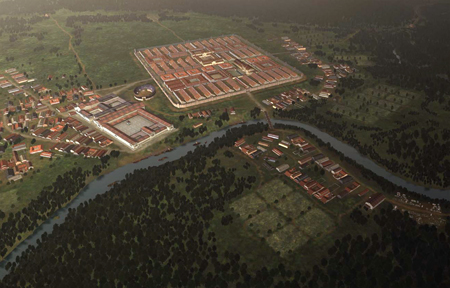Excavations at a Colonial Period site on the North Coast of Peru have revealed the first traces of a lost language. Sometime in the early 17th century, a Spaniard jotted down some notes on the back of a letter. Four hundred years later, archaeologists dug up and studied the paper, revealing how Peruvian natives used numbers. The find is significant because it offers the first glimpse of a previously unknown language and number system, says Dr. Jeffrey Quilter, director of the archaeological project at Magdalena de Cao Viejoand curator at the Peabody Museum Harvard. It also points to the great…
-
-
Archaeologists have stumbled upon what appears to be the remains of a substantial ancient settlement at Umm El-Mawagir in Kharga Oasis, Egypt. Dated to the Second Intermediate Period (1650 to 1550 BC), the newfound city is at least a thousand years older than any of the other major surviving ancient remains in the area. The ancient town lies along the bustling caravan routes connecting the Nile Valley of Egypt and the El-Kharga oasis with points as far as Darfur in western Sudan. The discovery was made by an American-Egyptian archaeological team from Yale University that is systematically searching the area…
-
Almost 10,000 years ago, in Utahs Escalante Valley, a new recipe was added to the prehistoric cookbook: mush cooked from the flour of milled sage brush seeds.In those times,what else would the early chefs put on your plate..err… rock? Archaeologists from the Brigham Young University are publishing what they’ve learned from five summers of excavations at the ‘North Creek Shelter’. The site,on the northern Colorado Plateau in southern Utah,has been occupied by humans on an off for the past 11,000 years, and is one of the oldest of such archaeological sites in Utah. In the upcoming issue of the journal…
-
Following years of restoration and development, the Marina el-Alamein archaeological site on Egypt’s Mediterranean coast will open to tourists mid-September. The Marina el-Alamein archaeological site a Hellenistic-Roman town is locatedabout 5km east of el-Alamein. The ancient city was accidentally discovered in 1986, when construction started on the Marina El-Alamein resort. The archaeological area spans a section that is more than 1km long and about 0.5km wide and is the largest archaeological site on Egypt’s north coast. Minister of Culture, Farouk Hosni, announced that the site will be opened to tourists mid-September complete with a high-tech lighting system throughout the entire…
-
Archaeologists have discovered a large Gallo-Roman religious complex located only a few kilometres from the ancient city of Le Mans. The ancient sanctuary is thought to have been an important pilgrimage area, visited by thousands to honour the gods. The religious complex unearthed in Neuville-sur-Sarthe about 5km north of Le Mans, France is excavated by archaeologists from the French National Institute of Archaeological Research (INRAP) and dated to the 1st to 3rd century AD. Traces of the complex were first revealed on aerial photographs taken in 2003, when an long period of drought scorched much of the vegetation on the…
-
Comparing Stonehenge Summer Solstice 2010 with 2009, it seems that the ‘Ancestor’ really stood out as something different. Each year there are small ‘arts & crafts’ performances (dance, live music, jugglers, …) but this year a massive 20ft steel sculpture was the guest of honour at Stonehenge, marking a significant change – a statement that the future and the now is just as important as the celebration of the summer solstice and the past, the ancient megaliths and the remembering of ancestors. So it seemed appropriate to kick-start this picture report with the statue – appropriately dubbed ‘The Ancestor’ – reaching out…
-
Britain, man your TVs and iPlayers!Great Britain might be a small island but it has a huge history and, every year, hundreds of excavations bring lost treasures up to the surface. Presented by Dr Alice Roberts, ‘Digging For Britain‘ joins these excavations in a new BBC Twohistory series. ‘Digging for Britain’ is produced by 360 Production (a look behind the scenes) and follows ayear of archaeology around the country, revealing and contextualising some of the newest finds, research and social history. Its four episodes focus onfocus on the Roman, Prehistoric, Anglo-Saxon and Tudor eras. Digging the Romans In the first…
-
Archaeology students learning to use mapping equipment have discovered a complex of monument buildings outside the Roman fortress at Caerleon, South Wales. The team says it will lead to a complete rethink about how Britain was conquered and occupied by the Roman forces almost 2,000 years ago. The students from the Cardiff Universitys School of History, Archaeology and Religion were learning how to use geophysical equipment in fields outside the Caerleon fortress. Squeezed into the ground between the amphitheatre and the River Usk, the outlines of a series of huge buildings were revealed. The discovery of the settelement’s monumental suburb…
-
Thinking of Lucy strolling around the east African landscape in search of food, we can nowpicture her looking for meat with a stone tool in hand. Bones foundin Ethiopia, push back the earliest known stone tool use and meat consumption by almost one million years and provide the first evidence that these behaviours can be attributed to Lucy’s species. Aninternational team of researchers has discovered evidence our ancestors were using stone tools and ate the nutricious meat and marrow of large mammals 1 million years earlier than previously documented. While working in the Afar region of Ethiopia, the Dikika Research…
-
Archaeologist working on Stone Age remains at a site in North Yorkshire say it contains Britain’s earliest surviving house. It dates to at least 8,500BC when Britain was part of continental Europe. The team from the Universities of Manchester and York unearthed the 3.5 metres circular structure next to an ancient lake at Star Carr, near Scarborough. The 10,500-year-old house, which was first excavated by the team two years ago, was comparable to an Iron Age roundhouse. It had post holes around a central hollow which would have been filled with organic matter such as reeds, and possibly a fireplace.It…








